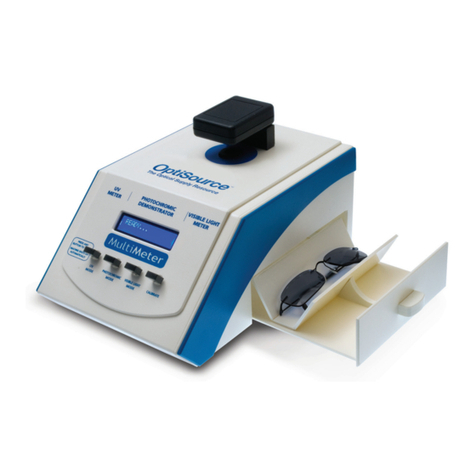
- 5 -
PRECAUTIONS DURING USE
It is recommended to wait a proper amount of time after turning on the equipment.
It will perform more accurate measurements.
Do not shake nor abruptly move the unit.
Doing so may cause failure or injury.
Do not apply excessive pressure to the unit. (Do not press the unit from the top.)
Doing so may cause inaccuracy on measurement.
While using the device, there may be constantly lit, missing or dead pixels on the LCD screen.
Since this is a normal characteristic of a LCD, do not represent a malfunction. Please use as is.
This device has been tested and found to comply with the limits of the standard IEC 60601-1-2: 2007.
These limits are designed to provide reasonable protection against harmful interference in a typical medical
installation.
This equipment generates, uses and can radiate radio frequency energy and, if not installed and used in
accordance with the instructions, may cause harmful interference to other devices in the vicinity.
If this equipment causes interference with other devices, which may be determined by turning the equipment off
and on, the user is encouraged to try and correct the interference by one or more of the following measures :
• Reorient or relocate the device receiving the interference.
• Increase the separation between the equipment.
• Connect the equipment into an outlet on a different circuit from that which the other device(s) are connected.
• Contact your dealer for additional help.
Never use portable and mobile radio frequency (RF) devices in the vicinity of the equipment.
These devices might adversely affect medical electrical equipment resulting in malfunctioning.
Do not apply excessive pressure when using the touch panel.
Screen might get broken or internal damage to the panel might occur.
Do not operate the touch panel with a hard or pointed object such as a mechanical pencil or pen.
Screen might get broken or internal damage to the panel might occur.
Never scratch, bend, twist nor deform the power cord.
Using a damaged cable might result in malfunctioning and increases the risk of an electric shock or a fire.
Never use the equipment with generic cables or accessories.
ElectroMagnetic Compatibility (EMC) performance might deteriorate affecting the operation of the equipment.
Do not place any strange object onto the nosepiece or the contact lens holder.
Placing an object different than eyeglasses, lens blanks or contact lenses might cause damage to this accessory.
Avoid using a nosepiece or contact lens holder if it is damaged (pointy edge).
If used, can damage (scratch) the surface of any lens placed over it.
Do not touch any optical component in the equipment.
It may cause a malfunction or to work under poor performance.
Do not move single vision lens too fast, tilt, or swing when you are in auto progressive mode.
The unit might switch automatically into progressive measurement mode.
Some small size frame spectacles might show different result from specification, due to limited setting angle of
the object.
A malfunction might occur if you measure progressive lenses with printed marks.
Please switch lens mode into progressive lens, when you measure lenses with ADD below +1.00D.
Some progressive lenses with flat power gradient for near, might show higher diopter than manufacturer's
specification.
Some spectacles with near point cut, might show lower diopter than manufacturer’s specification.
Some progressive lenses for middle/near vision, or some progressive additional lenses, might show different
results from manufacturers specification.




























